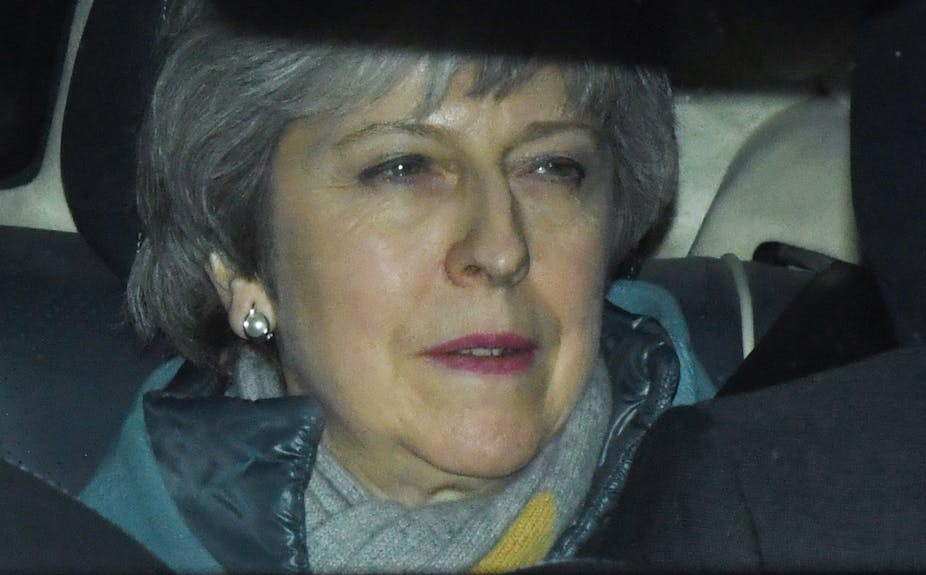The House of Commons has voted to delay Brexit beyond March 29, sending Theresa May to Brussels to ask for more time. But MPs voted against a series of amendments that would have translated into more specific demands on timing.
The government motion referred to two kinds of extension. The first would come into play if MPs vote to accept May’s deal. It would give the government up until June 30 to finalise its plans. The second, longer period comes into play if MPs continue to oppose May’s deal. There is no timeframe specified for this but the motion commits the government to returning to Brussels to ask for more time. It also makes it clear that this will probably mean that the EU would “require a clear purpose for any extension” and that the UK would have to take part in European elections being held in May.
As an indication of where MPs’ preferences lie, a vote on permitting an extension only until the end of June was defeated by three votes.
In the end, parliament voted to leave the government in charge of deciding how to end the current stalemate. But the timekeeper for this process is the EU, not the House of Commons. The session was a reminder that taking back control is more a seductive aspiration than a realisable objective.
The day before this latest vote, there was a moment when Michael Gove misspoke in parliament. Before rapidly correcting himself, he declared that “the House voted to give the people of this country a choice as to whether we were to remain in the European Union and leave it”. Ironically, this slip of the tongue captures the contradictions of how MPs approach Brexit, as revealed in parliament this week.
They want it both ways: they want to avoid leaving the EU without a deal but they have twice rejected the only deal on offer. Whoever gets MPs to coalesce around the existing deal or build consensus for an alternative course of action will have solved the Brexit conundrum.
The result of this week’s votes in the House Commons is to leave Brexit at the mercy of time. According to UK law, withdrawal from the EU is still scheduled to take place at 11pm on March 29. This date reflects the fact that Theresa May triggered the formal withdrawal process – something the 2016 referendum alone could not do – on March 29 2017. An EU country requesting to leave has a two-year period to negotiate a suitable exit.

Of course, timing has been crucial since the beginning of negotiations on EU withdrawal. Theresa May has consistently sought to run down the Brexit clock, notably by manipulating the schedule for voting on her withdrawal agreement. Her hope was that fear of a no-deal scenario would be enough to persuade MPs to back her deal. But we have now reached an existential stage. The nature of Brexit time is open to question.
EU leaders can, if they all agree when they meet on March 21-22, extend the period of Article 50 negotiations and thus create more time before Brexit happens. This god-like power of turning back the hands of time depends, as in an ancient religious rite, on the UK achieving the necessary goodwill. It is not that EU leaders are jealous and avenging, on the contrary, it is their pragmatism that means an Article 50 extension cannot be taken for granted.
What happened to the second referendum?
The EU has made clear what is required to postpone Brexit: a concrete reason. This could be a brief period of additional time to pass legislation related to the current withdrawal agreement or, for a longer extension, a complete rethink of how to approach Brexit, such as a general election or second referendum.

Before voting on the government motion, MPs rejected by a majority of 249 an amendment by Sarah Wollaston, who quit the Tories to join the new Independent Group, asking for an extension in order to organise a new referendum. The politics of this move were messy, even by current standards. Even supporters of a so-called “people’s vote” opposed supporting this amendment on the grounds the timing was inopportune and it would not be won.
Labour MPs were in a particular bind as the party is committed to finding a new strategy for dealing with Brexit. Labour’s official position was to abstain – although 25 of its MPs rebelled.
Jeremy Corbyn preferred to heap pressure on the prime minister by seeking, unsuccessfully, to prevent her from holding a third vote on the withdrawal agreement. In other words, the UK will need to get even closer to a no-deal Brexit before a sufficient number of MPs are willing to consider the radical option of going back to the people to break the deadlock.
Whichever option curries favour in an unruly parliament where party discipline has broken down, May will forever be associated with delay tactics. Her legacy is now set to be defined by one of three dilatory outcomes. A last-minute deal (only delivered perhaps by June 30) secured by the threat of a postponed and potentially softer Brexit; an unwanted no deal caused by running out of time; or a longer delay to reconsider the very idea of Brexit. In all three cases, her time as prime minister will soon be up.

